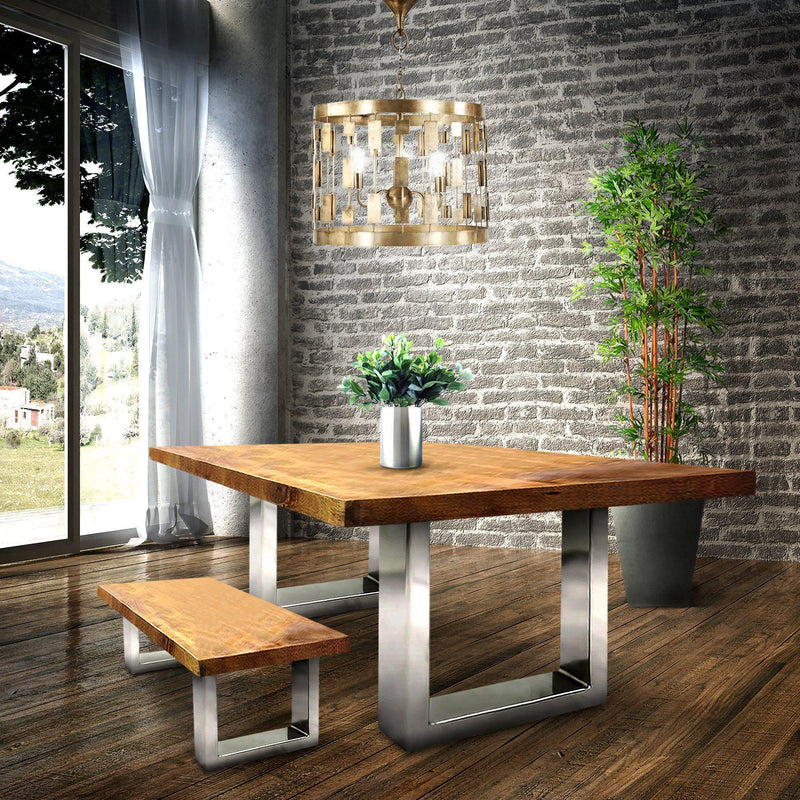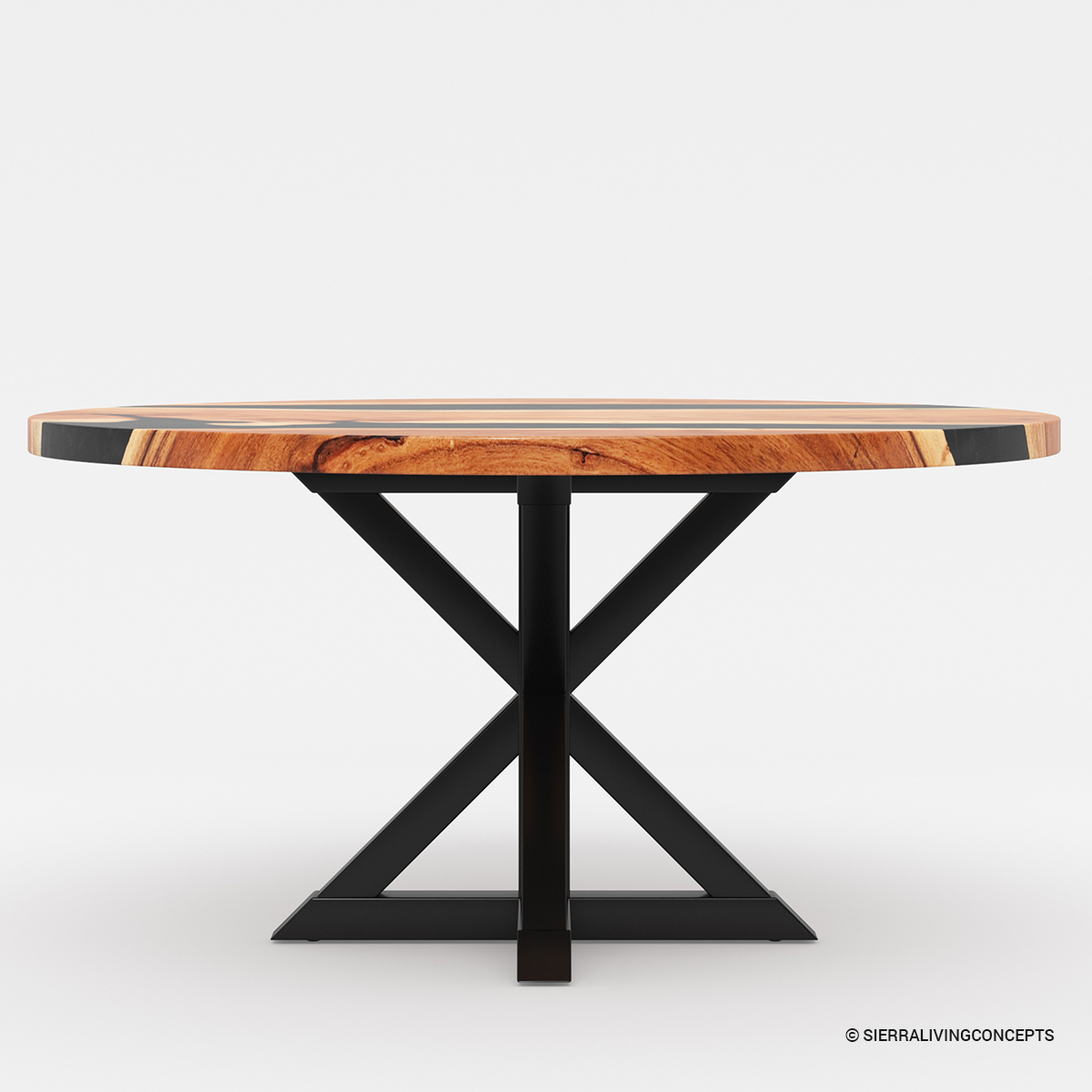How to Pick the Perfect Dining-room Table Legs for Your Home Decor
Choosing the ideal eating space table legs is a nuanced process that requires careful factor to consider of numerous components, including your area constraints, visual preferences, and sensible demands. The interaction in between styles, dimensions, and products can dramatically affect the ambiance of your eating area, making it important to approach this decision systematically. As you consider the myriad choices offered, it ends up being clear that the ideal selection extends beyond plain look; it can enhance your overall dining experience. What elements should you prioritize to guarantee your choice complements your home's distinct character?
Assess Your Dining Room
Evaluating your eating room is important for selecting the right table legs that enhance both aesthetic appeals and functionality. Begin by determining the measurements of your dining area, consisting of ceiling elevation, flooring space, and proximity to other furnishings. This info will certainly assist determine the proper dimension and elevation of your eating table, which directly influences the option of table legs.
Next, take into consideration the style and layout of your eating space. An open-concept layout may benefit from table legs that supply visual lightness, such as slender metal or acrylic options. Alternatively, a more standard setup might require tough wooden legs that supply a feeling of permanence.
Evaluate the existing shade combination and materials in your eating location. Harmonizing the table legs with these elements develops a cohesive appearance that boosts the overall style.
Eventually, a complete evaluation of your dining space will assist you in making an informed choice, making sure that your table legs not only improve the visual appeal but also offer functional objectives.
Consider Your Design Preferences
When picking dining-room table legs, it is crucial to assess your personal style choices, as they substantially influence the overall aesthetic of your eating area. Your choice of table legs can either complement or comparison with existing decor, making it vital to align them with your preferred interior decoration theme.
If your home leans in the direction of a modern-day visual, consider streamlined steel or minimal wooden legs that offer a clean, minimalist look. For an extra standard technique, elaborate wooden legs with detailed carvings can include a touch of style and elegance. Industrial designs take advantage of durable, resources such as recovered timber and metal combinations, reflecting a sturdy appeal.
In addition, farmhouse and rustic designs frequently favor sturdy, beefy legs that evoke a sense of heat and comfort. Conversely, if your décor is diverse, you might choose non-traditional shapes or a mix of materials to develop aesthetic rate of interest.

Evaluate Product Options
The selection of product for dining area table legs plays a crucial role in both durability and aesthetic charm. Typical products consist of timber, steel, and composite options, each offering distinct qualities that can influence the general look and longevity of your table.
Wood is a traditional choice, understood for its warmth and adaptability. Woods like oak and walnut provide extraordinary toughness and can be ended up in numerous stains to match any decor. Softwoods like pine Going Here are more prone to dents and scrapes, making them less excellent for high-traffic locations.
Steel legs, often crafted from steel or light weight aluminum, exude modernity and commercial beauty. They are resistant and highly durable to put on, making them suitable for households with youngsters or regular celebrations (dining room table legs). Furthermore, steel can be ended up in different shades, improving the personalization possibilities
Composite products, such as MDF or laminate, offer cost and varied layouts. While generally much less resilient than strong wood or steel, they can still offer a trendy look and are commonly easy to maintain.
Ultimately, the product you choose should line up with your lifestyle, aesthetic preferences, and the level of use your table will experience.
Determine Elevation and Size
Selecting the ideal elevation and dimension for your dining-room table is important for both performance and convenience. The basic elevation for eating tables typically varies from 28 to 30 inches, allowing adequate legroom for many individuals when seated. It is crucial to consider the dimensions of your eating room and the kinds of chairs you prepare to use.

Moreover, take into consideration the percentages of your dining area. A larger table in a sizable location can develop a grand ambiance, while a smaller sized table functions well in even more intimate settings. Inevitably, the right height and size will certainly integrate with your total decor and boost the eating experience for you and your guests.
Explore Customization Possibilities

Additionally, the layout of the legs can be tailored to fit different styles, such as rustic, modern-day, or commercial. Conical legs can stimulate a mid-century contemporary feel, while beefy, block-style legs might reverberate with conventional or farmhouse decor.
Home owners can additionally check out color finishes, from all-natural wood stains to repaint, allowing them to match or comparison with the tabletop and surrounding style.
In addition, leg elevation can be adapted to suit details seating plans or individual preferences, improving both comfort and capability.
Lastly, special decorations, such as carvings or attractive brackets, can better individualize the table legs, making the dining experience not simply a statement but a meal item in the home. By considering these sites modification options, home owners can create a dining space table that really reflects their uniqueness.
Verdict
Selecting the excellent dining area table legs requires cautious consideration of numerous factors, consisting of the dimensions of the eating space, style choices, material sturdiness, and preferred elevation. Customization options additionally improve the capacity to achieve a cohesive visual that complements the general decor. By systematically examining these aspects, property owners can make sure that the picked table legs not only satisfy practical requirements however additionally add positively to the dining experience and setting of the home.
Selecting the optimal eating area table legs is a nuanced procedure that calls for mindful factor to consider of different components, including your room restrictions, visual preferences, and sensible demands.Examining your eating area is critical for selecting the right table legs that enhance both looks and capability.When figuring out size, determine the location where the table will certainly be put to ensure it fits pleasantly, permitting for at least 36 inches of clearance around the table for very easy activity. A larger table in a large location can develop a grand setting, while a smaller sized table functions well in even more intimate setups.Picking the suitable eating area table legs requires mindful factor to consider of numerous factors, consisting of the measurements of the dining space, style preferences, material durability, and desired height.